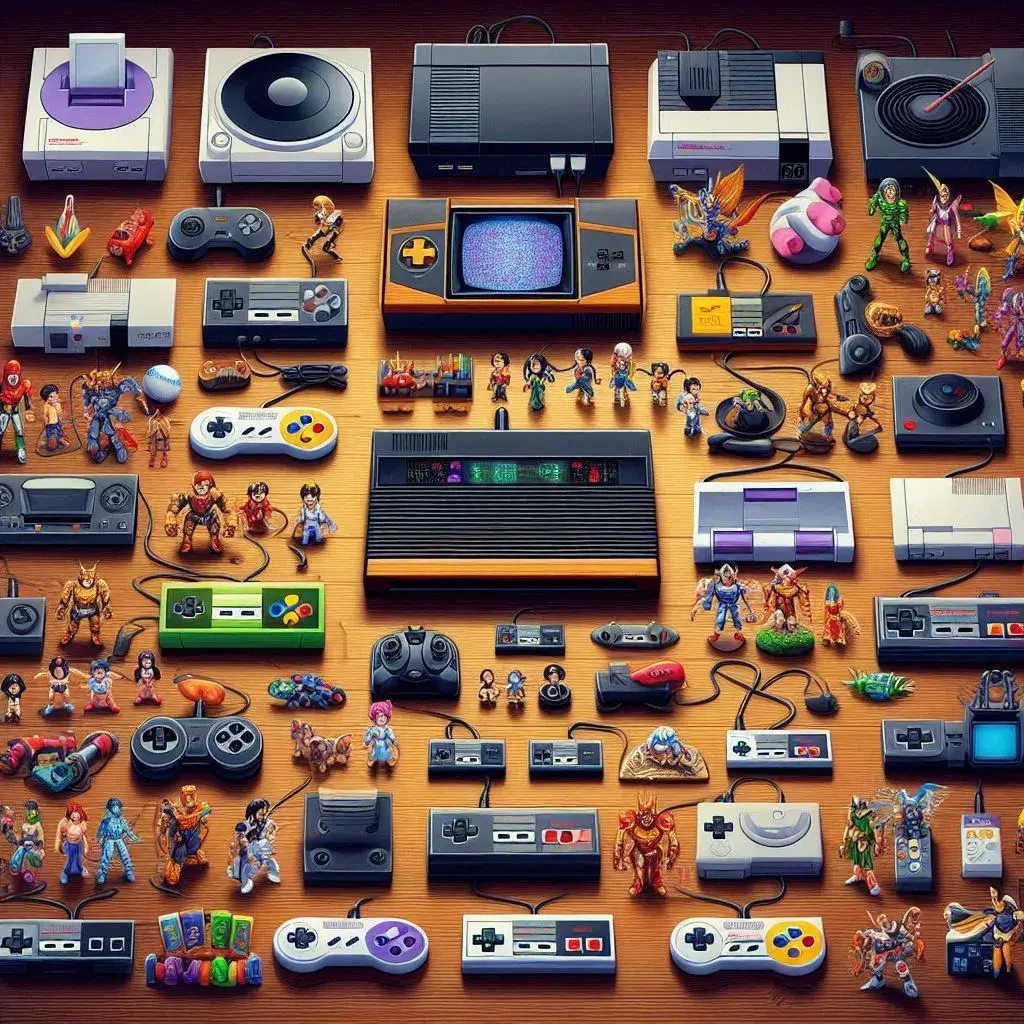The Evolution of Gaming Consoles
Did you know that the gaming consoles we know today evolved from humble beginnings like the Atari 2600?
It’s hard to believe that the powerful gaming systems of today, with ultra-realistic graphics and immersive gameplay, trace their roots to simple, pixelated games.
The history of gaming consoles is a fascinating journey that’s been shaped by technological advances, fierce competition, and the passion of gamers like you.
From the early days of the Atari 2600 in 1977, which brought video games into homes for the very first time, to the current-gen consoles pushing the boundaries of virtual reality and cloud gaming, consoles have undergone tremendous changes.
Every generation of gaming systems has introduced something new, whether it was a revolutionary controller, 3D graphics, or the rise of online multiplayer gaming.
The evolution of gaming technology has made gaming more accessible, immersive, and interactive than ever before, paving the way for an entirely new digital entertainment industry.
Are you ready to dive into the history of gaming consoles and discover how this transformation happened?
Let’s take a look at the milestones that have shaped your favorite gaming experiences, from the early Atari systems to the PlayStation 5 and Xbox Series X.
This journey through time will show how far we’ve come, and how the tech we take for granted today was built on the foundations of these iconic consoles.
As we explore this incredible gaming technology evolution, we’ll uncover the innovations, rivalries, and cultural moments that have defined the gaming landscape.
From pixelated classics to stunningly realistic worlds, the story of gaming consoles is one of growth, passion, and pure nerd nostalgia.
Let’s get started!
1. The Birth of Home Gaming: Atari and the 1970s Revolution
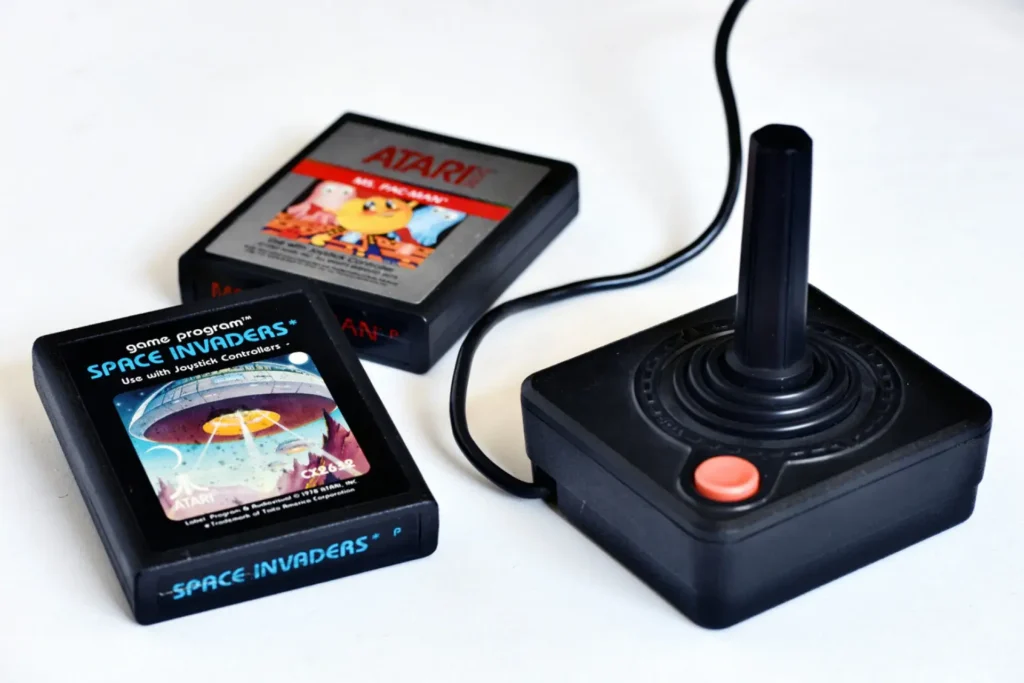
The Atari 2600 History marks the dawn of modern home gaming, transforming the way people interacted with video games.
Before Atari, video games were mostly confined to arcade machines, but in 1977, the Atari 2600 changed everything by introducing the first widely successful home gaming console.
This innovative device allowed players to enjoy video games from the comfort of their living rooms, making gaming accessible to millions across the globe.
Atari wasn’t just a console—it was a revolution in gaming.
The Atari 2600 helped set the foundation for everything that came after.
With its removable cartridges, it offered a vast library of games that could be swapped out, a feature that was unheard of at the time.
This was a key turning point in gaming history, as it proved that video games could evolve beyond simple arcade machines into full-fledged home entertainment systems.
The success of the Atari 2600 encouraged other companies to enter the market, leading to the gaming industry we know today.
Impact on the Industry:
Atari’s success paved the way for the future of home consoles.
As the 1970s gaming consoles began to make their mark, Atari led the charge with its innovative technology and expansive game library.
The console’s impact wasn’t just technological but cultural. It helped solidify video gaming as a mainstream pastime.
It also pushed forward the idea that video game consoles could evolve into dedicated entertainment systems, with dedicated processors and graphics that could handle different genres and styles of play.
Gaming in the 1970s:
One of the earliest games to gain attention on the Atari 2600 was Pong, a simple yet addictive table-tennis-like game that captured the imagination of millions.
While Pong may seem basic by today’s standards, its significance cannot be overstated.
It was the first commercial video game to gain widespread popularity, marking the start of a new era in entertainment.
The impact of these early games like Pong is still felt in modern gaming today, with their influence seen in countless recreations, remakes, and sequels.
The Atari 2600 history is more than just the story of a console; it’s the story of a technological leap that forever altered the landscape of entertainment.
It set the stage for everything that followed, shaping how future generations of gamers would interact with their favorite games.
From Pong to space adventures, the 1970s marked the beginning of the gaming technology evolution that continues to shape the gaming industry today.
2. The Rise of Nintendo: 1980s and the Golden Age of Gaming
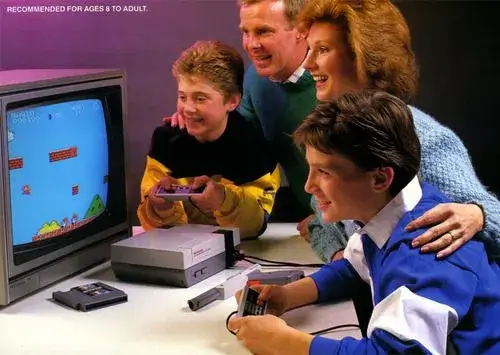
The Nintendo NES history marks one of the most significant periods in gaming history.
In the early 1980s, the gaming industry was recovering from the video game crash of 1983, which caused many console makers to pull out of the market.
Amidst this downturn, Nintendo emerged as the savior of home gaming, with the release of the Nintendo Entertainment System (NES) in 1985.
This console not only resurrected the industry but also solidified Nintendo’s role as the powerhouse of gaming in the decades that followed.
Nintendo’s Influence:
The 1980s gaming consoles were primarily defined by Nintendo’s NES, which brought new life to the gaming world.
Nintendo’s innovative approach to both hardware and software helped it stand apart from its competitors.
With its iconic controller design, the NES introduced a more accessible and user-friendly gaming experience compared to the previous generation of consoles.
The console also featured a wide array of titles that helped establish Nintendo as a household name.
Iconic Games:
The NES is synonymous with some of the most legendary games in history.
Titles like Super Mario Bros., The Legend of Zelda, and Metroid not only became household names but also laid the foundation for many modern game franchises.
Super Mario Bros., in particular, set the standard for platformers, combining tight controls with imaginative level design and catchy music.
Meanwhile, The Legend of Zelda introduced players to a vast open world with an intricate narrative and puzzle-solving elements, an approach that would influence game design for decades.
Metroid provided an early example of non-linear gameplay, where exploration and discovery took center stage, helping to shape the 8-bit revolution.
The 8-Bit Revolution:
One of the major advancements during the 1980s was the shift from the simpler, less detailed graphics of the Atari 2600 to the more complex and colorful 8-bit graphics of the NES.
This move opened up a new world of possibilities for developers, allowing them to create more immersive and visually appealing games.
The 8-bit revolution didn’t just affect graphics; it also impacted game design, pushing developers to focus on more intricate levels, richer soundtracks, and innovative gameplay mechanics.
The NES’s 8-bit graphics played a crucial role in shaping the look and feel of many iconic franchises, which are still celebrated today.
As the Nintendo NES history unfolds, it’s clear that the 1980s weren’t just a pivotal time for Nintendo—they were a pivotal time for gaming as a whole.
The era set the stage for modern game development, and many of the mechanics, styles, and characters that defined the 1980s gaming consoles continue to resonate with gamers today.
Nintendo’s legacy during this golden age of gaming left an indelible mark, and the impact of its innovations continues to be felt across generations of consoles and players.
The NES wasn’t just a console—it was a cultural phenomenon that changed the way we think about video games.
3. Sega vs. Nintendo: The Console Wars of the 1990s

The 1990s console wars between Sega Genesis vs SNES are legendary and remain one of the most defining moments in gaming history.
As gaming evolved into a cultural phenomenon, the rivalry between Sega and Nintendo fueled fierce competition and sparked some of the most iconic moments in video game history.
This era is often remembered for its aggressive marketing campaigns, memorable mascots, and groundbreaking games, which not only shaped the course of gaming but also set the stage for future consoles.
The Sega Genesis and Super Nintendo Entertainment System (SNES):
The Sega Genesis and Super Nintendo Entertainment System (SNES) were the two titans of the 16-bit era, and their rivalry was about much more than just hardware specs.
The Sega Genesis made a name for itself with its aggressive marketing and the release of beloved franchises like Sonic the Hedgehog and Streets of Rage.
Sega positioned itself as the “cool” brand, aiming at older gamers with faster, edgier gameplay and more mature themes.
In contrast, Nintendo stuck to its family-friendly image, offering a catalog of iconic games like Super Mario World, The Legend of Zelda: A Link to the Past, and Super Metroid.
These titles not only defined the 16-bit era but also reinforced Nintendo’s reputation for exceptional game design.
The competition between the Sega Genesis vs SNES wasn’t just about the games; it also pushed the limits of gaming hardware.
The 16-bit era brought about significant advancements in both graphics and sound, making gaming more immersive than ever.
Sega’s Genesis boasted better processing power, allowing for faster-paced action games, while Nintendo’s SNES had superior graphics, which resulted in more detailed and colorful visuals.
Both systems had their strengths, and this tug-of-war for supremacy forced both companies to innovate constantly, leading to a surge of creativity and technical improvements that defined the 1990s.
Impact on Popularity:
The intense rivalry between Sega and Nintendo in the 1990s console wars helped to make gaming a mainstream activity.
The competition led to both consoles attracting millions of fans, each fiercely loyal to their chosen platform.
The Sega Genesis was marketed as the console for “grown-ups” with its cooler image and edgy games, while Nintendo positioned the SNES as the family-friendly system, full of magical adventures and vibrant worlds.
This segmentation allowed both brands to carve out distinct identities, which drove intense fan engagement.
The fierce competition also sparked one of the most memorable marketing battles in history, with the infamous “Genesis does what Nintendon’t” slogan becoming synonymous with the rivalry.
The 16-bit era also marked a major leap in sound and gameplay, introducing iconic music and soundtracks that became ingrained in gaming culture.
Sonic the Hedgehog became a defining feature of the Sega Genesis, while the SNES boasted some of the most recognizable music in gaming history with titles like Super Mario World and The Legend of Zelda: A Link to the Past.
These advancements in sound design helped elevate gaming beyond just the visual experience, creating an emotional connection with players that persists to this day.
In this fierce battle, the Sega Genesis vs SNES rivalry ultimately pushed the entire gaming industry forward, driving both companies to create their best work.
The 1990s console wars weren’t just about competing hardware—they were about creating unforgettable gaming experiences that have endured for generations.
As we look back, we can see how the rivalry shaped the future of gaming, leading to the innovations we take for granted in today’s consoles.
The 16-bit era not only marked a technical breakthrough but also paved the way for the next generation of gaming consoles, where the stakes would only get higher.
The cultural impact of these two consoles set the stage for a global gaming community that now shares a passion for gaming regardless of the console they choose.
4. The PlayStation Revolution: Sony Enters the Scene
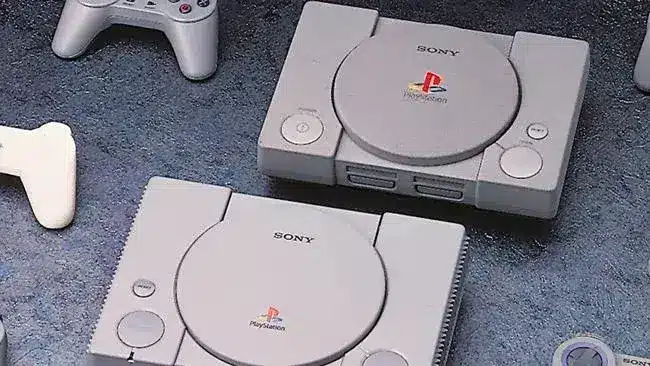
In 1994, Sony shook the gaming world to its core with the launch of the PlayStation console.
The PlayStation’s entry into the market signified more than just a new competitor; it marked the beginning of a massive revolution in gaming.
Sony’s focus on cutting-edge technology and game development quickly redefined the landscape of home gaming consoles.
The PlayStation wasn’t just a console—it was a phenomenon that captured the imagination of gamers around the globe.
PlayStation’s Impact: A New Era of Gaming
Before the PlayStation, the gaming industry was dominated by the likes of Sega and Nintendo.
However, Sony introduced an entirely new way of thinking about video game hardware and software.
By focusing on powerful hardware, a sleek design, and groundbreaking marketing, the PlayStation quickly became a favorite among gamers.
The console’s aggressive pricing and focus on 3D games made it stand out in a market previously dominated by 2D platformers.
Sony positioned the PlayStation not just as a game console, but as a lifestyle product—appealing to both core gamers and the broader entertainment market.
3D Graphics and CD-ROM Technology: Transforming the Gaming Experience
One of the key innovations that the PlayStation brought to the table was its use of 3D graphics.
While the Sega Saturn and Nintendo 64 were experimenting with 3D, Sony’s PlayStation was the first to fully embrace the potential of polygonal 3D environments, allowing for more immersive and visually dynamic games.
This shift to 3D was a game-changer, enabling developers to create vast, detailed worlds that were simply impossible on previous hardware.
It wasn’t just about playing games; it was about experiencing new worlds.
In addition to 3D graphics, the PlayStation made full use of CD-ROM technology, which allowed games to be stored on larger, more efficient disks than the cartridges used by its competitors.
This shift in storage not only enabled more complex games but also ushered in the era of full-motion video (FMV) sequences and high-quality soundtracks.
Titles like Final Fantasy VII would utilize the CD-ROM format to deliver rich, cinematic experiences with high-quality audio, revolutionary at the time.
The ability to load vast amounts of data from a single CD also led to more expansive games with deeper narratives and more detailed environments.
Notable Games: Shaping the Legacy
The launch of the PlayStation was accompanied by a strong lineup of games that would go on to define the platform and the gaming industry as a whole.
Perhaps the most iconic game from the early PlayStation library is Final Fantasy VII.
As one of the most beloved RPGs of all time, Final Fantasy VII demonstrated the power of the PlayStation’s hardware, with its stunning pre-rendered backgrounds and groundbreaking full-motion videos.
The game also helped to cement the PlayStation’s reputation as the go-to console for RPGs, setting the stage for countless RPG franchises to follow.
Another game that had a significant impact on the PlayStation’s legacy was Gran Turismo.
This racing simulation game set new standards for realism, offering a driving experience that was both technical and thrilling.
It was one of the first games to showcase the PlayStation’s ability to handle detailed, realistic graphics, setting the stage for future racing simulators.
Gran Turismo would go on to become one of the best-selling game franchises of all time, helping Sony solidify its dominance in the gaming industry.
Sony PlayStation History and Console Evolution
The PlayStation was a pivotal moment in the PlayStation console evolution.
It set the foundation for a multi-generational franchise that would grow to redefine the gaming landscape.
From the original PlayStation to the PlayStation 2, and later the PlayStation 3, PlayStation 4, and PlayStation 5, Sony’s continued innovation has shaped gaming hardware and software alike.
Each console has brought something new to the table, whether it’s the introduction of DVD technology, an online gaming service, or 4K gaming.
In conclusion, the Sony PlayStation history isn’t just about the consoles themselves but also about the profound impact they’ve had on the gaming community.
Sony’s vision to push the boundaries of gaming technology, combined with its commitment to high-quality games, changed the way we play, forever.
As we look back on the PlayStation revolution, it’s clear that the console’s entry into the gaming scene was nothing short of transformative, setting the stage for everything that came after.
The PlayStation not only changed the way we play games—it redefined gaming as we know it.
With a rich legacy and a commitment to innovation, Sony PlayStation remains a pillar of modern gaming.
5. The 2000s: The Rise of Online Gaming and HD Consoles

The 2000s marked a transformative era in the gaming world, with the introduction of online gaming and high-definition (HD) consoles.
This decade was a battle between two titans: Microsoft’s Xbox and Sony’s PlayStation 2, but it was also an era where the way we played games was changed forever.
Let’s take a closer look at the monumental shifts in gaming during the 2000s, from the rise of online multiplayer to the move toward HD graphics that would define the future of console gaming.
Xbox vs. PlayStation 2: The Battle for Supremacy
When Microsoft launched the Xbox in 2001, it faced stiff competition from Sony’s PlayStation 2, which had already dominated the market since its release in 2000.
The Xbox vs. PlayStation 2 rivalry would come to define the early 2000s, as both consoles offered unique features and innovations that captured the attention of gamers.
The PlayStation 2 history is filled with milestones, as it not only introduced the first truly affordable DVD player to households but also boasted an incredibly diverse and extensive library of games.
Titles like Grand Theft Auto: San Andreas and Final Fantasy X kept PlayStation 2 on top, solidifying its place as one of the best-selling consoles of all time.
However, Microsoft’s Xbox came with something groundbreaking—online multiplayer.
The Xbox Live service, which launched in 2002, revolutionized gaming by enabling players to connect to the internet and compete with others around the world, setting a new standard for online play.
Despite the Xbox’s online capabilities, the PlayStation 2 retained a stronghold in the market, and its massive game library kept it in the lead.
The competition between these two consoles wasn’t just about hardware—it was about a battle for the future of gaming.
The PlayStation 2 maintained dominance, but Microsoft had successfully introduced online gaming as a core component of the gaming experience, which would later influence the design of all future consoles.
Introduction of Online Play: A New Era of Gaming
The introduction of online play in the early 2000s took gaming to the next level.
While the PlayStation 2 and Xbox were already able to support online multiplayer, it was the Xbox Live service that truly made online gaming mainstream.
With Halo 2 in 2004, Microsoft delivered an experience that connected gamers in ways never seen before.
Halo 2’s online multiplayer mode was revolutionary for its time, offering players a smooth, lag-free experience with matchmaking and leaderboards.
The Xbox Live community rapidly grew in size, becoming one of the defining aspects of the console’s success.
It was a space where gamers could not only compete but also connect with friends and form communities.
The rise of online gaming didn’t just change how we played—it also changed how we socialized through gaming.
As broadband internet became more widely available, the ability to game with others in real-time, across different regions, became the norm, marking the beginning of the online multiplayer gaming culture we know today.
Even PlayStation 2 adapted to the changing times, adding an online adapter that allowed players to experience online multiplayer gaming for the first time in many of its most beloved franchises, such as Final Fantasy XI and Gran Turismo 4.
However, it was clear that online gaming was a central focus for the future of gaming, and this would only expand further with the next generation of consoles.
HD Graphics and the PS3: The Dawn of High-Definition Gaming
As we moved into the second half of the 2000s, HD gaming became the standard.
The release of the PlayStation 3 in 2006 and the Xbox 360 in 2005 marked the beginning of the HD console era, where 1080p graphics were not just a luxury but a necessity for new consoles.
These consoles offered players the ability to experience their favorite games in unprecedented clarity and detail, thanks to the power of HD graphics and Blu-ray technology (in the case of the PS3).
The PlayStation 3 history was shaped by its powerful Cell processor, which enabled stunning graphics and complex processing power, allowing developers to push the limits of visual fidelity.
This was especially evident in games like Killzone 2 and Gran Turismo 5, which showcased the potential of the PS3’s hardware.
The Xbox 360 followed suit, offering similar graphics capabilities and performance.
It introduced a more user-friendly interface and a robust set of features for downloading content, streaming media, and online gaming.
The Xbox 360’s Xbox Live service evolved to include downloadable games, movie rentals, and even live TV, making it a complete entertainment hub.
Both consoles set new benchmarks for the gaming industry, offering HD graphics, immersive gameplay, and online features that were once unimaginable on earlier systems.
These innovations cemented the Xbox 360 and PlayStation 3 as gaming powerhouses, with vast game libraries and strong third-party support.
Xbox PlayStation 2 History and HD Gaming Consoles
The rivalry between the Xbox and PlayStation 2 laid the foundation for future gaming battles, with online play becoming a central feature of all future consoles.
Meanwhile, the PlayStation 3 and Xbox 360 took gaming to new heights with HD graphics and high-quality online experiences.
The 2000s was a pivotal decade in the evolution of gaming, where the boundaries of what was possible in terms of graphics, gameplay, and online experiences were pushed further than ever before.
The transition to HD gaming consoles with the PS3 and Xbox 360 made it clear: the future of gaming wasn’t just about playing—it was about experiencing games in a way that felt as real and immersive as possible.
These consoles not only represented the pinnacle of technology at the time, but they also set the stage for the next evolution in gaming that continues to influence the industry today.
As we look back at the Xbox PlayStation 2 history and the rise of HD gaming consoles, it’s clear that these consoles were more than just systems for playing games—they were the harbingers of a new era in gaming, one where online multiplayer, HD graphics, and immersive experiences became the standard.
This era transformed the way we think about gaming, and the innovations that started here continue to shape the gaming industry today.
6. The Nintendo Wii and the Casual Gaming Revolution

The Nintendo Wii wasn’t just a console—it was a revolution. Launched in 2006, Nintendo’s unique approach to gaming with the Wii reshaped the industry by appealing to a broader audience than ever before.
While other consoles were pushing for cutting-edge graphics and powerful processors, Nintendo introduced something entirely different: motion gaming technology.
The result was a system that appealed not only to hardcore gamers but also to casual players and families, opening up the gaming world to new generations and demographics.
Nintendo’s Unique Approach: The Motion Controls
The standout feature of the Nintendo Wii history is undoubtedly its motion controls.
Unlike anything seen before, the Wii Remote, or Wiimote, allowed players to physically interact with games.
Whether it was swinging a virtual tennis racket, throwing a virtual bowling ball, or aiming a bow and arrow, the motion-sensing capabilities of the Wii brought a new level of immersion to gaming.
Nintendo’s innovative motion gaming technology allowed players to use the Wiimote as a pointing device, steering wheel, or even a sword for games like The Legend of Zelda: Twilight Princess.
This unique approach was designed to make gaming more intuitive and accessible, especially for those who had never picked up a controller before.
The simplicity and novelty of motion control made gaming feel more natural, blurring the lines between the virtual world and the real world in a way no one had expected.
Revolutionizing the Market: Gaming for Everyone
The Wii’s accessibility opened up a world of gaming to an audience that consoles before it had largely ignored.
While the PlayStation 3 and Xbox 360 were targeting hardcore gamers with their high-end graphics and processing power, Nintendo’s focus on casual gamers allowed the Wii to expand the demographic of who played video games.
The Wii’s motion controls and easy-to-understand interface made it an attractive option for people who were previously intimidated by more complex gaming systems.
Kids, parents, and even grandparents found themselves playing games together, making the Wii a household favorite.
The system was so accessible that people of all ages could pick it up and start playing without needing a tutorial or steep learning curve.
Families could play Wii Sports together, exercise with Wii Fit, or solve puzzles with Super Mario Galaxy.
It wasn’t about mastering complex button combinations or controller layouts—it was about having fun and being active.
The Nintendo Wii also changed how gaming was perceived. It wasn’t just for hardcore gamers—it was a form of entertainment that anyone could enjoy.
This shift in how people viewed gaming marked a significant step in the evolution of the industry, as the Wii successfully proved that gaming technology didn’t have to be complicated to be enjoyable.
Notable Games: From Wii Sports to Super Mario Galaxy
Of course, a console is only as good as the games it supports, and the Nintendo Wii didn’t disappoint.
One of the most iconic games for the system was Wii Sports, which bundled with the console and quickly became a cultural phenomenon.
From playing tennis to bowling, Wii Sports introduced a whole new way to enjoy interactive gaming. Its easy-to-learn mechanics and physical movement gameplay made it a hit with everyone, from kids to older adults.
For many, Wii Sports was their first experience with a gaming console, and it forever changed their perception of what gaming could be.
Another standout title was Super Mario Galaxy.
While the Wii was known for its casual gaming appeal, it also delivered deep, memorable experiences for more serious gamers.
Super Mario Galaxy showcased the Wii’s ability to create intricate, imaginative worlds and offer rich, engaging gameplay experiences.
With its inventive level designs and gravity-defying mechanics, it became one of the most beloved Mario games of all time.
This is just one example of how the Wii balanced casual gaming with a rich library of titles that appealed to more seasoned gamers as well.
The Legacy of the Wii: A Changing Industry
The success of the Nintendo Wii was undeniable.
It sold over 100 million units worldwide, making it one of the best-selling consoles of all time. However, its influence went beyond sales figures.
The Wii’s focus on accessibility, physical interaction, and family-friendly gaming changed the entire industry.
In the years that followed, other companies began to explore motion controls, with PlayStation Move and Kinect for Xbox drawing inspiration from Nintendo’s innovation.
Yet, the Wii was unique in its ability to pull in a broader demographic, while still retaining a strong catalog of games for traditional gamers.
It wasn’t just a “gimmick” or “fad”—it was a shift in how gaming technology could engage people, from all walks of life, in new and exciting ways.
The Impact of Motion Gaming Technology
The Nintendo Wii stands as one of the most important milestones in the history of gaming consoles.
Its motion gaming technology not only opened up gaming to a larger audience but also demonstrated that innovation in gameplay could be just as revolutionary as advancements in graphics.
While other consoles focused on powerful processors and stunning visuals, Nintendo’s bold and unexpected approach to gaming solidified the Wii as a true game-changer.
Looking back on the Nintendo Wii history, it’s clear that the casual gaming revolution wasn’t just about expanding the market—it was about reshaping how we think about gaming and who can be a gamer.
The Wii didn’t just entertain—it connected people and brought gaming into the lives of millions who had never considered themselves gamers before.
Today, we continue to see its influence in the rise of motion-based games and more inclusive, family-friendly gaming experiences.
Whether you’re reminiscing about Wii Sports or admiring the legacy of Super Mario Galaxy, one thing is certain: the Nintendo Wii forever changed the world of gaming.
7. The Xbox One and PlayStation 4: The Modern Console Wars
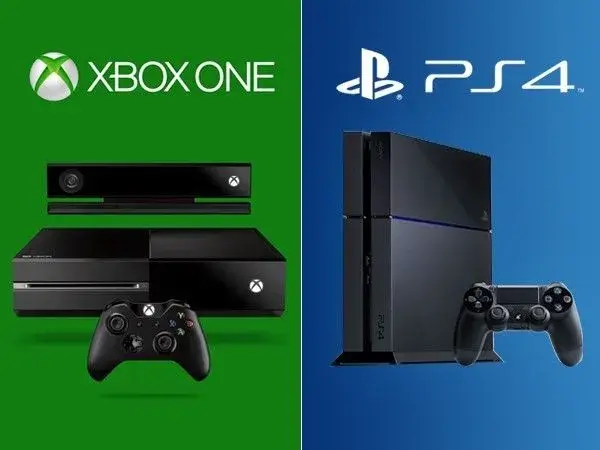
The battle between Xbox One and PlayStation 4 (PS4) was not just another chapter in the console wars—it marked a new era in modern gaming consoles.
Launched in 2013, both systems pushed the boundaries of gaming technology, offering cutting-edge graphics, advanced processing power, and an immersive gaming experience that set the stage for a new generation of gamers.
While the 8th generation of consoles brought high-definition gaming to new heights, it was the features beyond just hardware that really defined this console war, like online services, game libraries, and cross-platform play.
The Evolution of Graphics and Power
When comparing the Xbox One vs PlayStation 4, one of the first things that stand out is the immense power and graphics capabilities these systems introduced.
Both consoles featured 8-core processors, high-definition graphics, and the ability to display games in 4K resolution with the enhanced versions of each system—Xbox One X and PlayStation 4 Pro.
These technological advancements allowed for more detailed textures, smoother frame rates, and breathtaking visual effects, bringing games to life in ways that were previously unimaginable.
With these improvements, gamers could immerse themselves in vast, open-world environments like those in The Witcher 3: Wild Hunt or Red Dead Redemption 2, where every blade of grass and distant mountain peak was rendered with remarkable detail.
This leap in gaming technology wasn’t just about visuals; it allowed for more complex and realistic game worlds, with faster load times and smoother gameplay.
As both consoles evolved, it was clear that the Xbox One and PlayStation 4 weren’t just competitors—they were setting the bar for modern gaming consoles in terms of power and performance.
Online Services and Game Libraries: The Rise of Digital Gaming
Another major development that defined the Xbox One PlayStation 4 comparison was the rise of digital gaming and online services.
While previous generations had introduced online multiplayer, the Xbox One and PS4 made it mainstream.
Both consoles heavily integrated digital services like Xbox Live, PlayStation Plus, and Game Pass, which allowed players to access a wide variety of games via subscription.
Xbox Game Pass, for instance, revolutionized the way gamers accessed content, offering an extensive library of games for a monthly fee, and eventually adding cloud gaming features for players to stream their games.
This shift to subscription-based models not only changed how games were distributed but also reshaped how we thought about ownership.
No longer did you need to buy physical copies of games—everything could be downloaded directly to your console.
Meanwhile, PlayStation Plus became essential for online play on the PS4, offering free monthly games and exclusive discounts, alongside its essential multiplayer features.
Both platforms saw a shift away from physical media, with digital downloads and cloud storage becoming the primary method of obtaining and playing games.
Cross-Platform Play and the Gaming Community
In the battle between Xbox One and PlayStation 4, cross-platform play quickly emerged as one of the most requested features by gamers.
For years, players were restricted to playing with others who owned the same console.
But as the gaming community grew, the demand for cross-platform multiplayer experiences became too great to ignore.
Both Xbox and PlayStation slowly began to implement cross-platform play for games like Fortnite, Minecraft, and Rocket League, enabling gamers to team up regardless of which system they owned.
This growing trend towards cross-platform gaming marked a significant shift in how developers and console makers viewed the gaming community.
With PlayStation 4 and Xbox One supporting games across multiple platforms, it was clear that gaming wasn’t just about competing consoles anymore—it was about bringing gamers together.
The rise of cross-platform play helped strengthen the online gaming community, allowing for a more connected, inclusive gaming experience.
The Future of Modern Gaming: Console Evolution
The Xbox One PlayStation 4 comparison was not just about which system is better—it was about the future of gaming technology.
These consoles were not only the foundation for the games we enjoy today but also the launching point for the next generation of gaming experiences.
With advancements in VR, cloud gaming, and AI-driven game design, the 8th generation consoles laid the groundwork for what’s to come in the next wave of next-gen consoles.
Both Xbox and PlayStation introduced major milestones that continue to influence gaming today.
Whether it was PlayStation’s immersive storytelling and exclusive titles like God of War and Spider-Man, or Xbox’s focus on power, services, and cross-platform play, both consoles provided something unique to gamers, strengthening their legacy in the gaming industry.
The Console Wars and the Legacy of Xbox One and PS4
As we look back on the Xbox One and PlayStation 4 era, it’s clear that both consoles played a massive role in shaping the modern gaming landscape.
They brought us into a new age of HD graphics, digital gaming, and expansive game libraries.
More importantly, they fostered a sense of community that transcended the walls of our living rooms, allowing gamers to connect and share experiences across platforms, something that is now a cornerstone of modern gaming.
The Xbox One vs PlayStation 4 rivalry will go down in history as one of the most influential periods in console gaming.
It was a time when hardware, software, and online services converged to create an immersive and connected gaming experience like never before.
Looking ahead, the legacy of these consoles will continue to shape the next era of gaming consoles, as they laid the foundation for the future of gaming technology.
8. The Next Generation: PlayStation 5 and Xbox Series X
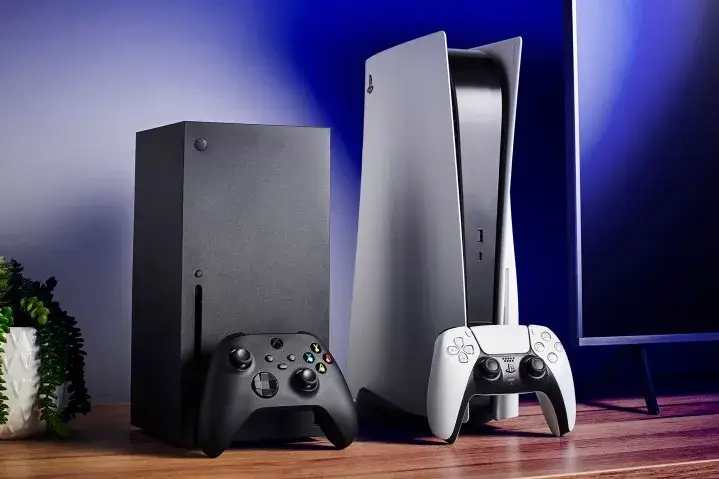
As we enter a new era of gaming, the PlayStation 5 and Xbox Series X have set the stage for what’s next in the world of gaming consoles.
These next-generation systems, released in 2020, have raised the bar for what we can expect from consoles, offering unprecedented power, speed, and innovative features.
Whether you’re a die-hard PlayStation fan or an Xbox enthusiast, both consoles have redefined the gaming experience, making this era of gaming one of the most exciting in history.
Technological Advancements: The Power of PlayStation 5 and Xbox Series X
The PlayStation 5 and Xbox Series X represent a monumental leap forward in terms of hardware.
One of the most significant technological advancements is the inclusion of ultra-fast SSDs, which drastically reduce load times and enhance the overall performance of games.
Games now load in mere seconds, eliminating the annoying loading screens that were once a staple of gaming.
Both consoles also support 4K and 8K graphics, which means players can experience their favorite games in stunning detail and clarity.
The power behind the PlayStation 5 and Xbox Series X allows developers to create incredibly realistic environments, with textures that pop and worlds that feel more alive than ever before.
Whether you’re exploring vast open-world landscapes or battling in fast-paced action sequences, the graphical capabilities of these consoles are truly mind-blowing.
Additionally, the consoles feature ray tracing, a cutting-edge rendering technology that creates realistic lighting and shadow effects, making everything look more natural.
The ray tracing technology enhances the immersion factor, allowing players to experience environments with a level of detail that was previously only achievable on high-end gaming PCs.
New Features and Innovation: The Future of Controllers and Functionality
While the raw power of the PlayStation 5 and Xbox Series X is impressive, it’s the innovative features that really set these consoles apart.
For the PS5, one of the most talked-about innovations is the adaptive triggers on the DualSense controller.
This feature allows players to feel varying levels of resistance in the triggers, simulating actions like pulling a bowstring or pressing down on the gas pedal in a racing game.
This tactile feedback adds a new layer of immersion, making gaming experiences more engaging and realistic.
On the other hand, the Xbox Series X introduces the Quick Resume feature, which allows players to switch between multiple games without ever having to quit or load from scratch.
This innovation is a game-changer for those who love to jump between different titles or want to take a quick break without losing their progress. It streamlines the gaming experience, making it quicker and more seamless.
Both consoles have also made strides in haptic feedback, providing players with dynamic sensations during gameplay.
This sensory feedback is further amplified by the PS5’s Tempest 3D AudioTech and Xbox Series X’s Dolby Vision for immersive sound and visuals, ensuring that every moment of gameplay is more lifelike and captivating.
The Future of Gaming Consoles: A Glimpse into What’s Next
Looking ahead, the PlayStation 5 and Xbox Series X are not just powerful machines—they are paving the way for the future of gaming.
With the continued evolution of cloud gaming, we may soon see a time where consoles no longer need to rely on physical hardware to deliver high-quality gaming experiences.
These systems are already integrating with cloud services like PlayStation Now and Xbox Cloud Gaming, allowing players to stream games directly to their consoles or even mobile devices.
The power of AI and machine learning is also beginning to shape gaming experiences, from smarter NPCs to procedurally generated worlds.
As both Sony and Microsoft continue to invest in these technologies, we can expect future games to become even more dynamic and responsive to player input.
Another exciting possibility is the integration of virtual reality (VR). While the PSVR headset has already made waves with the PlayStation 4, the PS5 is taking things to the next level with an upgraded version of its VR system, offering improved graphics, better tracking, and more immersive gameplay.
Similarly, Xbox is rumored to explore VR in the coming years, as the demand for more immersive gaming experiences continues to grow.
The Evolution of PlayStation 5 and Xbox Series X
The PlayStation 5 features and Xbox Series X review show just how far we’ve come in the world of gaming consoles.
These systems offer an incredible combination of power, speed, and innovative features that push the boundaries of what is possible in gaming.
With 4K/8K support, ultra-fast SSDs, and cutting-edge ray tracing, players can now enjoy games in ways that were once unimaginable.
Meanwhile, features like the adaptive triggers on the PS5 controller and Quick Resume on the Xbox Series X enhance the overall gaming experience, making it more immersive and seamless.
As we look toward the future, these next-generation consoles are not just providing the best gaming experience of today—they are laying the foundation for the gaming experiences of tomorrow.
Whether it’s the integration of cloud gaming, AI-driven worlds, or virtual reality, the PlayStation 5 and Xbox Series X are ushering in a new era of gaming technology that will continue to captivate players for years to come.
9. Handheld Consoles: From Game Boy to the Nintendo Switch
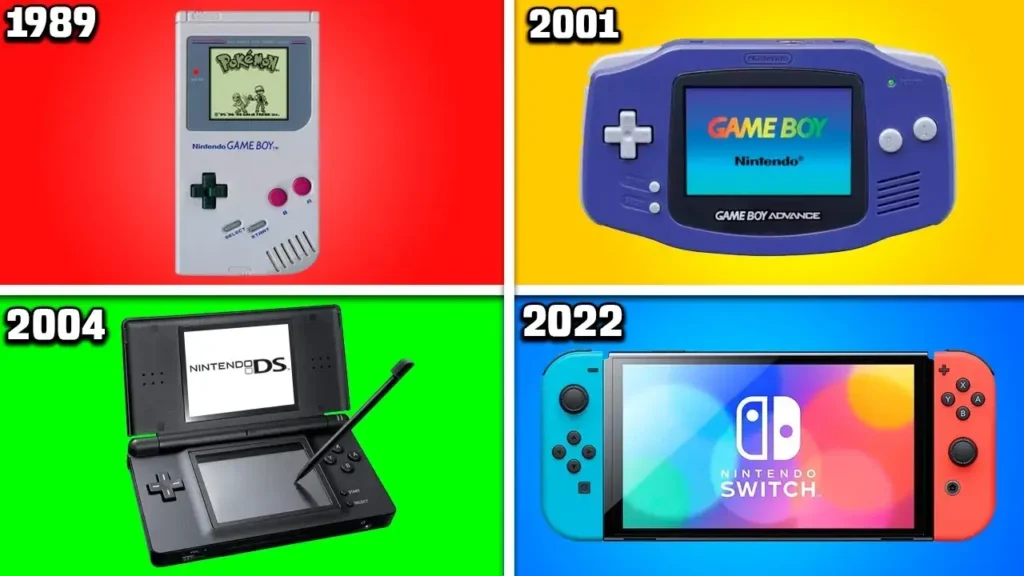
Handheld gaming has evolved dramatically over the years, revolutionizing how we game on the go.
From the early days of the Game Boy to the innovative Nintendo Switch, portable gaming consoles have consistently pushed boundaries, offering players the freedom to enjoy their favorite games anywhere.
The journey from simple monochrome screens to sophisticated, hybrid systems has redefined what it means to game on the move.
In this article, we’ll dive into the rich history of handheld gaming consoles, exploring key milestones and innovations that have shaped portable gaming, with a special focus on the groundbreaking Nintendo Switch.
The Evolution of Handheld Gaming: From the Game Boy to Modern Portables
The story of handheld gaming consoles begins in 1989 with the launch of the Game Boy by Nintendo.
A revolutionary device at the time, the Game Boy allowed players to take their games with them, a novelty that sparked the explosion of portable gaming.
Featuring a simple monochrome screen and a library of iconic titles like Tetris and Pokémon Red and Blue, the Game Boy became a cultural phenomenon and introduced millions of gamers to the concept of gaming on-the-go.
The Game Boy was so successful that it led to a long line of successors, including the Game Boy Color and Game Boy Advance, which introduced color screens, improved graphics, and more immersive gameplay experiences.
By the early 2000s, handheld consoles were no longer just about simple games.
The PlayStation Portable (PSP), released by Sony in 2004, was a major leap forward, offering 3D graphics, multimedia capabilities, and internet connectivity.
The PSP brought console-quality gaming to your pocket, and its successor, the PlayStation Vita, continued this trend with even more powerful hardware and a touch-sensitive screen.
Despite strong competition, Nintendo continued to dominate the portable gaming market with its Nintendo DS and Nintendo 3DS systems.
The 3DS took handheld gaming to a new dimension with its 3D capabilities, offering an experience that didn’t require glasses to enjoy.
But it was in 2017 that Nintendo revolutionized the handheld console once again with the launch of the Nintendo Switch, an innovation that set a new benchmark in portable gaming.
Portable Gaming’s Popularity: Gaming On-the-Go
Handheld gaming’s rise in popularity is directly tied to the changing ways people engage with entertainment.
Gone are the days when gamers were tethered to a TV screen or a desktop PC.
The rise of smartphones and tablets also played a role in bringing portable gaming into the mainstream.
However, dedicated handheld consoles like the Nintendo Switch have carved out their own niche by offering a unique experience that general-purpose devices cannot replicate.
Portable gaming allowed players to break free from the confines of home gaming setups and take their experiences wherever they went.
Whether it’s during long commutes, waiting in line, or relaxing on vacation, handheld consoles brought a level of convenience that other gaming systems couldn’t match.
The ability to pause a game at any time and pick it up later, along with the broad variety of game genres available, made handheld consoles increasingly appealing to all types of gamers, from casual players to dedicated enthusiasts.
Nintendo Switch’s Unique Features: The Hybrid Console
The Nintendo Switch represents the pinnacle of handheld gaming consoles.
What sets the Switch apart from its predecessors is its ability to seamlessly transition between a home console and a handheld device.
The Switch’s hybrid design allows players to dock the console and play it on a television, or remove it from the dock and continue playing on-the-go with its built-in screen.
This flexibility made the Switch a game-changer, allowing it to appeal to both portable and traditional console gamers.
One of the standout features of the Nintendo Switch is its Joy-Con controllers, which can be detached from the console and used wirelessly for multiplayer gaming, either on the console itself or on a separate screen.
This innovation brought a new level of interactivity and fun to portable gaming, allowing gamers to share the experience with friends, no matter where they are.
Additionally, the Nintendo Switch’s portability and the wide selection of games available—ranging from first-party titles like The Legend of Zelda: Breath of the Wild and Super Mario Odyssey to third-party games and indie titles—further cemented its place as a dominant force in the portable gaming market.
With the Nintendo Switch Lite, a more affordable and fully handheld-only version of the system, Nintendo reached an even broader audience, making portable gaming more accessible to a diverse range of players.
The Future of Handheld Gaming: What’s Next for Portable Consoles?
Looking ahead, the future of handheld gaming consoles seems promising.
While mobile phones and tablets continue to play a role in the portable gaming space, dedicated handheld systems like the Nintendo Switch are continuing to evolve.
The Switch’s success has shown that there is still a demand for consoles that offer a premium gaming experience on-the-go, and Nintendo’s investment in cloud gaming and continued hardware upgrades will likely push handheld gaming into exciting new directions.
The question remains whether other companies will attempt to rival Nintendo’s dominance in the handheld market.
While Sony has distanced itself from the handheld market after the PS Vita, other players, like Valve’s Steam Deck, have entered the fold, offering a more powerful portable gaming experience.
The Steam Deck allows players to enjoy PC games in a handheld format, bridging the gap between mobile gaming and the expansive library of PC titles, and offering a different approach to portable gaming.
However, the Nintendo Switch’s unique hybrid design, exceptional game library, and widespread appeal continue to make it a standout leader in the portable gaming market.
With continuous software updates, new game releases, and even potential hardware refreshes, the Nintendo Switch history will continue to be written, shaping the future of handheld gaming consoles for years to come.
The Legacy of Handheld Gaming
From the humble beginnings of the Game Boy to the cutting-edge Nintendo Switch, handheld consoles have come a long way.
These devices have reshaped the way we think about gaming, making it possible to enjoy a full console experience in the palm of our hands.
With the Nintendo Switch leading the charge, portable gaming is not only here to stay—it is thriving, with even greater potential on the horizon.
Whether you’re revisiting nostalgic favorites or discovering new worlds, handheld consoles have made gaming more accessible and enjoyable than ever before.
10. The Future of Gaming Consoles: What’s Next?
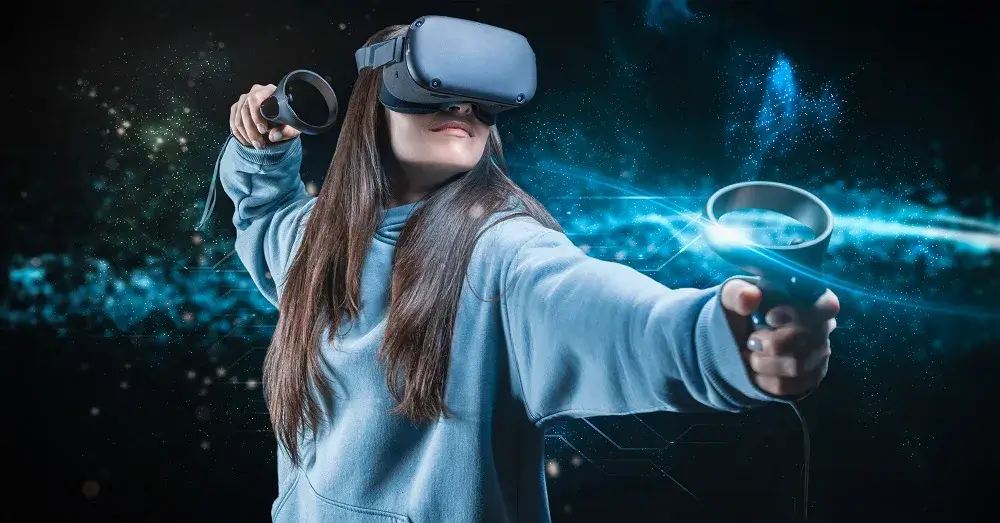
As we look toward the future of gaming consoles, it’s clear that the industry is on the brink of a transformative evolution.
Advancements in cloud gaming, virtual reality (VR), augmented reality (AR), and digital distribution are reshaping how we play, purchase, and experience video games.
With new technologies continuously emerging, gamers are poised to see a radically different gaming landscape in the years to come.
In this article, we’ll explore these trends and dive deep into the future of gaming consoles, considering everything from cloud gaming to the potential end of physical media.
Cloud Gaming and Subscription Models: The Future of Play
One of the most significant trends influencing the future of gaming consoles is the rise of cloud gaming.
With services like Google Stadia, Xbox Cloud Gaming, and PlayStation Now, the ability to stream games directly to your device without the need for high-powered hardware is transforming the gaming experience.
Players can access high-quality games through a simple internet connection, whether they’re playing on their smartphone, tablet, PC, or console.
Cloud gaming eliminates the traditional barriers of hardware limitations, offering the potential for unlimited game libraries and instant access to the latest titles.
As internet speeds continue to improve and 5G technology rolls out, cloud gaming trends are expected to dominate the gaming landscape, allowing players to enjoy console-quality experiences anywhere, without the need for expensive, bulky hardware.
Additionally, subscription-based models like Xbox Game Pass and PlayStation Plus are paving the way for the next phase of gaming consumption.
These services offer access to an extensive catalog of games for a flat monthly fee, making gaming more accessible than ever before.
As gaming becomes more integrated into subscription models, players will no longer need to worry about purchasing individual titles.
Instead, their monthly subscription fee grants them access to a vast library of content, similar to how services like Netflix have revolutionized television and movie viewing.
This shift will likely reduce the need for physical game copies and further solidify digital downloads as the future of gaming.
Also read: How cloud gaming is changing the future of console gaming.
Virtual Reality and Augmented Reality: A New Dimension of Gaming
Another exciting development in the future of gaming consoles is the integration of virtual reality (VR) and augmented reality (AR) technologies.
While VR gaming has already made strides with devices like the Oculus Rift and PlayStation VR, its full potential has yet to be realized.
In the future, we may see VR becoming a core component of gaming consoles, allowing players to immerse themselves in entirely new worlds and interact with their environment in unprecedented ways.
The PlayStation VR2 is already pushing the envelope, offering advanced features like haptic feedback, adaptive triggers, and eye tracking. As VR technology continues to advance, we may see next-generation consoles fully supporting VR, with more immersive experiences and even greater realism.
The integration of AR also holds incredible potential, enabling players to blend the real world with virtual elements, creating games that are dynamic and interactive in ways never seen before.
It’s possible that, in the near future, VR and AR could become essential features of all gaming consoles, transforming everything from gameplay mechanics to storytelling.
Imagine first-person shooters where players physically navigate through virtual environments or open-world games that blend seamlessly into your real-world surroundings.
These innovations could redefine how we engage with games, pushing the boundaries of what’s possible in virtual entertainment.
The End of Physical Media? Digital Downloads and Streaming Services
As cloud gaming and subscription models grow in prominence, the future of physical media looks increasingly uncertain.
Over the past decade, digital downloads have become the primary method for acquiring games, with consoles like the PlayStation 5 and Xbox Series X offering the option to purchase and download games directly from their respective stores.
Meanwhile, physical game discs are becoming less common, with many new titles offering digital-only editions.
The trend towards digital-only consoles is already underway, as seen with the Xbox Series S, which lacks a disc drive altogether.
In the coming years, we can expect even more gaming consoles to embrace this model, with game streaming services like Google Stadia, Xbox Cloud Gaming, and PlayStation Now offering instant access to titles with no need for physical copies.
This shift could completely disrupt the traditional retail model, as players rely on digital storefronts for their gaming needs.
The move away from physical media also raises the question of ownership and game preservation.
With digital games, players technically don’t own the title in the same way they would with a physical disc.
As cloud gaming becomes more prevalent, questions surrounding digital rights management (DRM) and the long-term availability of titles may become pressing concerns.
Despite these challenges, the convenience of digital downloads and streaming is likely to outweigh these issues, making physical media a thing of the past in the coming decades.
What’s Next? A Sneak Peek into the Future
As we speculate on the future of gaming consoles, one thing is certain: the industry is evolving at a rapid pace.
While cloud gaming and subscription services will likely take center stage, virtual reality and augmented reality could redefine how we play and experience games, bringing a level of immersion and interactivity never before seen.
With console manufacturers continuously innovating and expanding their services, we’re on the brink of a new era of gaming—one where access to games is easier, more diverse, and more immersive than ever before.
The move toward digital-only consoles, cloud gaming trends, and VR/AR integration will shape the way gamers play in the next decade.
As technology continues to advance, we can expect even more breakthroughs in gaming hardware and software, paving the way for new forms of entertainment and connectivity that we can only dream of today.
Ultimately, the future of gaming consoles is exciting and full of possibilities, and gamers everywhere can look forward to a future where their favorite pastimes evolve alongside cutting-edge technology.
The Gaming Horizon
The future of gaming consoles is bright, driven by innovation in cloud gaming, VR, and AR technologies.
As we move away from physical media and embrace the convenience of digital downloads and subscription models, gaming will become more accessible, dynamic, and immersive than ever before.
Whether you’re streaming games on the go, diving into virtual worlds, or enjoying the latest hits through a subscription service, the next generation of gaming consoles promises a thrilling new era of interactive entertainment.
Conclusion: Reflecting on the Legacy and Impact of Gaming Consoles
The evolution of gaming consoles has been nothing short of extraordinary.
From the humble beginnings of early systems like the Atari 2600 and Nintendo Entertainment System (NES) to the sophisticated powerhouses of today like the PlayStation 5 and Xbox Series X, the journey of gaming consoles has shaped the very fabric of gaming culture.
These technological marvels have not only revolutionized the way we play but have also influenced social interactions, entertainment consumption, and the very definition of gaming itself.
Summary of Gaming Console Evolution: A Legacy of Innovation
Throughout the decades, gaming consoles have marked significant milestones that have forever changed the landscape of interactive entertainment.
The PlayStation revolutionized the industry with its focus on 3D graphics and CD-ROM technology, while the Nintendo Wii expanded the audience with motion controls and casual gaming accessibility.
In the 2000s, HD graphics and online gaming became the norm, with Xbox 360 and PlayStation 3 setting the stage for digital gaming, online services, and multiplayer communities.
The current generation of consoles—PlayStation 5 and Xbox Series X—has raised the bar even higher, with 4K/8K gaming, ray tracing, and ultra-fast SSD storage that pushes the boundaries of gaming performance and immersion.
Meanwhile, innovations like cloud gaming and virtual reality are already reshaping what we think of as the future of gaming.
The history of gaming consoles is a testament to the constant drive for innovation and the tireless pursuit of pushing the limits of technology.
With each new console generation, we’ve seen not just incremental improvements, but paradigm shifts that have redefined gaming experiences for both casual players and hardcore enthusiasts.
What’s Your Legacy?
Now, we want to hear from you, the passionate gaming community!
Which console had the biggest impact on you?
Whether it was the Super Nintendo, the PlayStation 2, or the Nintendo Switch, every gamer has a special connection to the systems that defined their experiences.
Was it the hours spent playing Halo 2 on Xbox Live or the revolutionary motion controls on the Wii that changed how you interacted with games?
What’s your favorite gaming system of all time?
The beauty of gaming lies in its ability to bring people together, no matter their background or location, united by a love for interactive storytelling, competition, and exploration.
So, let’s reflect together on the consoles that have shaped the gaming world—and our lives.
Join the Conversation
We’d love to hear your thoughts! Share your favorite console memories and experiences in the comments below.
Whether you’re a nostalgic retro gamer or someone who enjoys the cutting-edge capabilities of modern systems, your voice matters in shaping the future of gaming discussions.
What do you think the future holds for gaming consoles? Will cloud gaming become the dominant platform?
How will virtual reality and augmented reality impact your gaming experiences? Your insights are essential to the conversation.
And if you’re passionate about gaming history, technology, and the future of gaming consoles, be sure to check out more articles on our blog.
Dive deeper into the gaming console evolution and stay ahead of the curve on emerging trends and technologies that are changing the way we play.
FAQs: Unveiling the Evolution of Gaming Consoles
What was the first gaming console ever made?
The very first gaming console ever made was the Magnavox Odyssey, released in 1972.
While it may seem primitive compared to today’s advanced systems, the Odyssey marked the beginning of the gaming console history.
Unlike modern consoles, it didn’t have built-in games. Instead, players used physical overlays to enhance the visual experience on their TVs.
This device paved the way for all future video game consoles and introduced the idea of home entertainment through interactive gameplay.
The Magnavox Odyssey remains a foundational piece in the timeline of gaming console evolution, showcasing the early days of digital entertainment.
How did the PlayStation impact the gaming world?
When Sony PlayStation launched in 1994, it wasn’t just another console—it was a game changer.
The PlayStation revolutionized the gaming world by introducing 3D graphics, CD-ROM technology, and an expansive library of games.
The shift from cartridges to CDs allowed for more detailed and immersive gaming experiences, which significantly raised the bar for other console manufacturers.
Iconic titles like Final Fantasy VII and Gran Turismo helped establish PlayStation as a leading force in the gaming industry, solidifying its place in the hearts of gamers worldwide.
Not only did PlayStation push the boundaries of gaming technology, but it also expanded the market.
Its success with PlayStation 2 made gaming a mainstream entertainment option, forever changing how people perceived video games.
Whether through the PS1’s groundbreaking titles or the PS2’s dominance in the early 2000s, Sony PlayStation redefined what gaming could be, influencing countless generations of gamers and shaping the future of gaming consoles.
What’s the most powerful gaming console today?
As of today, the most powerful gaming consoles on the market are the PlayStation 5 and Xbox Series X.
Both consoles offer next-gen gaming experiences with impressive technical capabilities, but they each bring something unique to the table.
The PlayStation 5 is renowned for its ultra-fast SSD, allowing for lightning-fast load times, and its innovative DualSense controller with adaptive triggers and haptic feedback that create a more immersive gaming experience.
Ray tracing technology on the PS5 enhances lighting and reflections, making games look stunningly realistic.
On the other hand, the Xbox Series X boasts the most powerful hardware of any console to date, with a superior GPU and a slight edge in raw performance.
It supports 4K gaming at 120Hz, making it ideal for high-end gaming experiences.
Moreover, with the integration of Xbox Game Pass, players have access to an expansive library of games without the need for additional purchases.
This blend of power, versatility, and services makes the Xbox Series X a powerhouse in modern gaming consoles.
Both of these next-gen consoles are a giant leap from previous generations, and as technology advances, the race for the most powerful gaming console will continue to push the boundaries of what is possible in gaming.
Whether you’re a fan of PS5’s exclusive games or Xbox Series X’s raw power and subscription services, both systems offer a taste of the future of gaming.
Follow our social media to receive content as soon as it is released.👇

